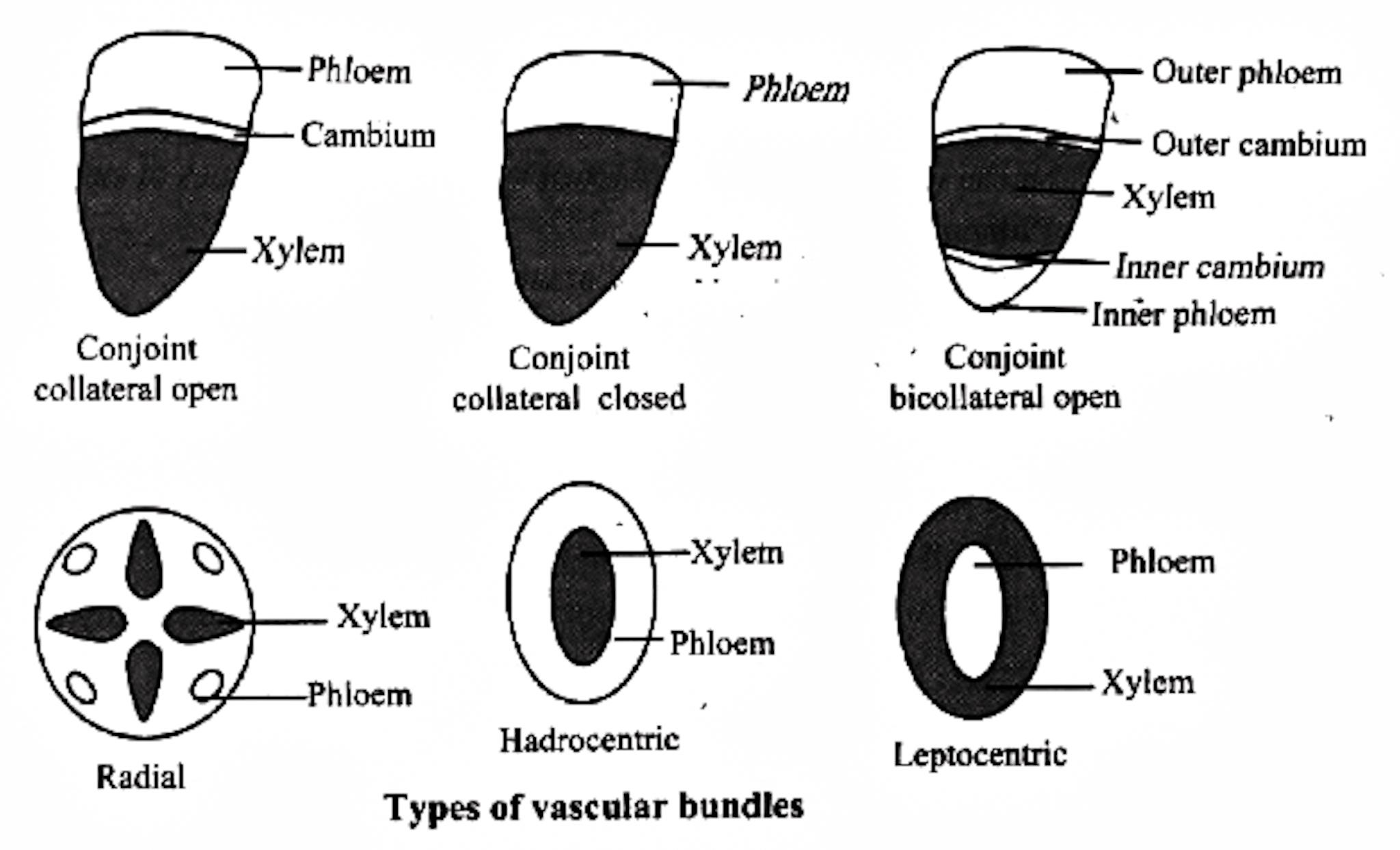
Radial vascular bundles occur in
A. Stem
B. Monocot root
C. Dicot root
D. Both monocot and dicot roots
Answer
516k+ views
Hint: The arrangement of conducting vessels in the stem or leaves of a plant.
Complete answer:
The radial vascular bundle is a simple arrangement of the xylem and phloem side by side on different radii and are separated by non-conductive tissues.
These radial vascular bundles are the characteristic feature of the root of both dicots and monocots.
Additional information:
- The radial vascular bundle is the presence of xylem and phloem in patches.
- Several vascular bundles vary from 2-6 in dicot root, whereas numerous vascular bundles are present in monocot roots.
- Vascular bundles are mainly of four types:
1. Collateral bundle – a vascular bundle where the strand of phloem is present external to the strand of xylem in the same radius. It is two types: closed collateral bundle and open collateral bundle.
2. Bicollateral bundle – a vascular bundle where phloem is situated on the periphery and inner side of xylem.
3. Concentric bundle – a vascular bundle in which one type of vascular bundle surrounds the other. It is of two types: amphivasal bundle and amphicribral bundle.
4. Radial vascular bundle – a vascular bundle in which primary xylem and phloem strands are separated by non-vascular tissues.
- They are part of the transport system in vascular plants.
So, the correct answer is Both monocot and dicot roots.

Note: The vascular bundle is arranged in a ring, with the pit concentrated at the core of the stem, rather than being scattered throughout the plant interior. In each vascular bundle, the xylem and phloem are separated by a substance called vascular cambium.
Complete answer:
The radial vascular bundle is a simple arrangement of the xylem and phloem side by side on different radii and are separated by non-conductive tissues.
These radial vascular bundles are the characteristic feature of the root of both dicots and monocots.
Additional information:
- The radial vascular bundle is the presence of xylem and phloem in patches.
- Several vascular bundles vary from 2-6 in dicot root, whereas numerous vascular bundles are present in monocot roots.
- Vascular bundles are mainly of four types:
1. Collateral bundle – a vascular bundle where the strand of phloem is present external to the strand of xylem in the same radius. It is two types: closed collateral bundle and open collateral bundle.
2. Bicollateral bundle – a vascular bundle where phloem is situated on the periphery and inner side of xylem.
3. Concentric bundle – a vascular bundle in which one type of vascular bundle surrounds the other. It is of two types: amphivasal bundle and amphicribral bundle.
4. Radial vascular bundle – a vascular bundle in which primary xylem and phloem strands are separated by non-vascular tissues.
- They are part of the transport system in vascular plants.
So, the correct answer is Both monocot and dicot roots.

Note: The vascular bundle is arranged in a ring, with the pit concentrated at the core of the stem, rather than being scattered throughout the plant interior. In each vascular bundle, the xylem and phloem are separated by a substance called vascular cambium.
Latest Vedantu courses for you
Grade 11 Science PCM | CBSE | SCHOOL | English
CBSE (2025-26)
School Full course for CBSE students
₹41,848 per year
EMI starts from ₹3,487.34 per month
Recently Updated Pages
Master Class 11 Economics: Engaging Questions & Answers for Success

Master Class 11 Business Studies: Engaging Questions & Answers for Success

Master Class 11 Accountancy: Engaging Questions & Answers for Success

Master Class 11 English: Engaging Questions & Answers for Success

Master Class 11 Computer Science: Engaging Questions & Answers for Success

Master Class 11 Maths: Engaging Questions & Answers for Success

Trending doubts
State and prove Bernoullis theorem class 11 physics CBSE

1 ton equals to A 100 kg B 1000 kg C 10 kg D 10000 class 11 physics CBSE

State the laws of reflection of light

One Metric ton is equal to kg A 10000 B 1000 C 100 class 11 physics CBSE

Difference Between Prokaryotic Cells and Eukaryotic Cells

1 Quintal is equal to a 110 kg b 10 kg c 100kg d 1000 class 11 physics CBSE




